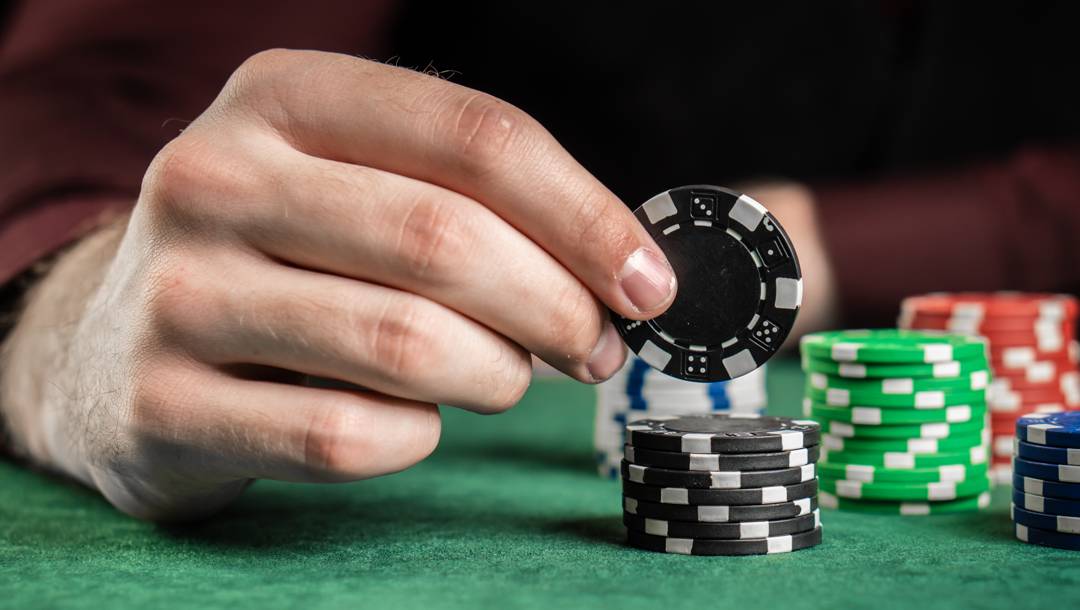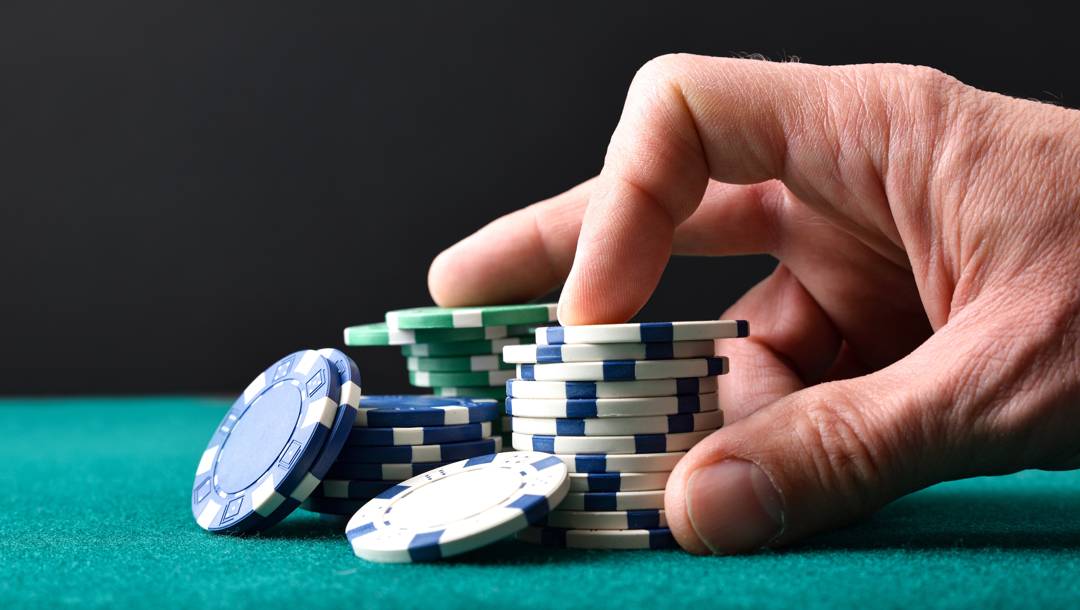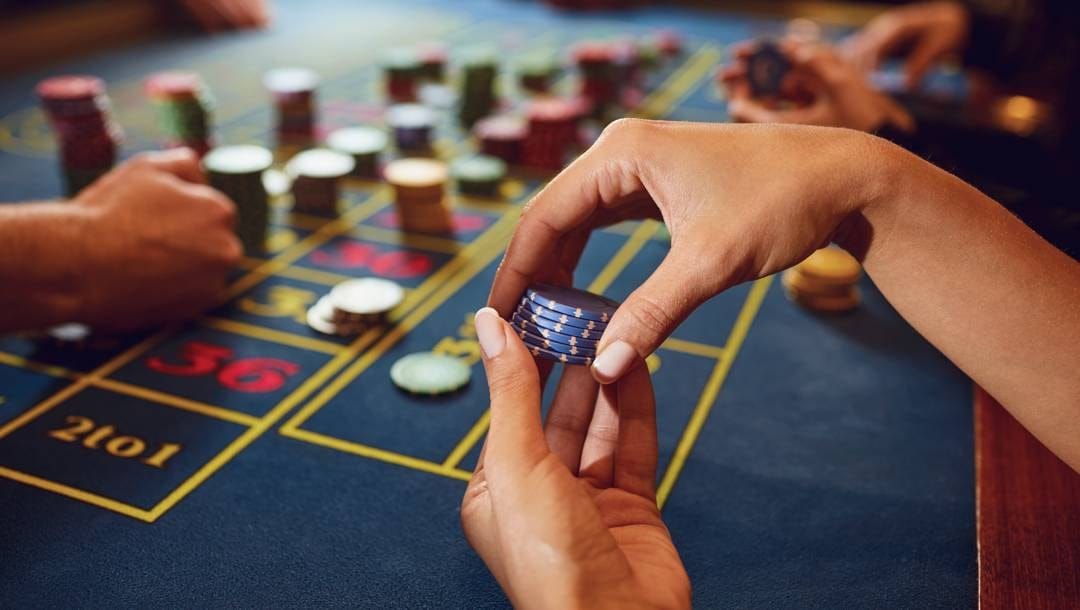Online table games like roulette will always be a game of chance. That doesn’t mean you have to blindly place random wagers hoping that one might hit. That’s a surefire way to lose your bankroll quickly.
Because of roulette’s long-running popularity, players have developed roulette systems that have become equally popular. Many such roulette betting methods utilize similar and simple roulette betting techniques.
BetMGM allows players to try as many of these methods as they like in BetMGM’s great selection of roulette games. Experience is the best teacher with all of these systems.
The Martingale Strategy
The Martingale strategy might be the most well-known of all roulette betting systems. It’s extremely popular because of its effectiveness and simplicity.
That simplicity comes from the Martingale method being the classic negative progression system. That means you increase your wager amount following a lost bet, trying to maximize the value of your wins so they outweigh your losses.
With the Martingale strategy, you double your original stake after each loss and return to your original amount following each win. If this doesn’t sound like it’s for you, there’s another system that tries to come to the same result from another angle.
The Paroli Strategy (Reverse Martingale)
If you hear someone talk about the Reverse Martingale system, they’re discussing the Paroli betting system. The Paroli method got that nickname because it’s essentially the opposite of the Martingale system in its function and theory.
The Paroli strategy uses positive progression, doubling your bet amount after each win. With this system, you try to limit your losses so that you can realize a small profit if you get lucky.
The Paroli method works best when you stick to the outside bets in roulette because the similar odds keep the math in your corner. Another strategy takes these concepts and tweaks them a bit.
The d’Alembert Strategy

The d’Alembert strategy builds on the number of negative progression systems that are popular with roulette players. It’s similar to the Martingale system but with an important difference.
Like with the Martingale system, you increase your wager after each loss in the d’Alembert method. However, instead of doubling your stake, you increase it by one unit. Additionally, you decrease your bet by a unit after a win.
If your starting bet amount was $5, you’d increase the value of your next wager to $6 if that first bet is a loss. Should that wager hit, you’d then decrease the value of your next bet back to $5.
Some players prefer the d’Alembert strategy because it minimizes risk compared to the Martingale system. That kind of math is the focus of the next system.
The Fibonacci Strategy
Every time you use the Fibonacci roulette strategy, you’re tipping your hat to a revered mathematician, Leonardo Fibonacci de Pisa. This system uses his Fibonacci sequence.
That is a simple sequence of whole numbers in which each number is the sum of the two preceding numbers. The sequence begins with 0, 1, 1 and continues indefinitely.
Using the Fibonacci method, you multiply your stake by each Fibonacci number as you progress. Naturally, you start with the second Fibonacci number of one.
It’s important to keep responsible gambling in mind and set an overall budget as losses can mount quickly if luck isn’t on your side. That consideration is just as important with another method that bears its creator’s name.
The Romanosky Roulette System
This strategy owes its existence to Igor Romanosky, one of the most famous roulette players in history. The system is exclusively for European roulette and won’t afford the same opportunity for American roulette players.
The Romanosky roulette system covers all but four of the non-zero numbers on the wheel using a series of columns, dozens, and corners bets. When correctly deployed, you win at least one of the bets in two of three possible scenarios.
However, such wins don’t guarantee you a profit, as you need to record at least eight consecutive wins to realize a profit. Even then, profits can be small, which is a common thread across all of these strategies.
The Labouchere System

The Labouchere roulette betting system reintroduces some simple math to your gameplay. Unlike with the Fibonacci strategy, you get to decide which numbers you use.
The Labouchere method asks players to create their own sequence of at least three numbers on a horizontal line. You add the first and last numbers in the sequence and bet the sum.
After each win, you remove those numbers from the sequence. Following each loss, you add the amount you just bet to the end of your sequence.
The Labouchere system is popular because it’s easy to customize. It isn’t alone in that regard, however.
The Andrucci Betting System
The Andrucci betting system is unique because instead of relying on math, it builds on your experience. The strategy asks players to simply observe and record before beginning to play.
If you’re going to try the Andrucci method, you should just observe at least 30 spins of the wheel. With each play, record which pocket the pill rested on.
Then, evaluate the results to detect any patterns or numbers that hit more often than others. Using that information, you start to play, preferring those numbers or following those patterns.
While many players utilize this strategy, there is no documented evidence that it gives players a significant edge. You might have good luck with the method in one session and then struggle in the next, which can be a common experience with all systems.
Roulette Neighbor Bets Strategy
If the Romanosky system sounded intriguing to you, the neighbor bets roulette system could be of interest as well. This method also prioritizes coverage of many numbers on the wheel.
The method includes the name of the bets you’ll place; the neighbor bet. This wager targets a number on the table and also stakes all the neighboring numbers.
It’s an easy way to give yourself a greater chance at a win but the downside is that you can burn through your gambling bankroll quickly as well. Still, it’s better to have a plan than to bet blindly.
Touch-and-Go System in Roulette

Despite its name, the Touch and Go roulette betting system isn’t designed to put players in a precarious situation. It’s like a hybrid of the neighbors bet and Andrucci strategies.
With the Touch and Go method, you record a set of at least 20 results from the table you want to play on. Then, you look for any neighbors on the wheel that hit during those plays.
If there are any pairs, you would bet them until they hit. At that point, you remove them from the sequence and move on to the next pair, or start the process over again if there are no more pairs in the results you recorded.
Like the Romanosky system, the Touch and Go strategy owes its existence to a famous roulette player, Frank Scoblete. Another method owes its existence to a fictional character.
The James Bond Strategy
While most people associate James Bond with baccarat, author Ian Fleming presented his iconic hero using a particular method to play roulette in his “Casino Royale” novel. That method has since been known as the James Bond roulette strategy.
To use this system, set a budget for your play that is easily divisible by 20. You then place 14 of those 20 units on the high numbers, five of the units on the numbers from 13 to 18, and the final unit on the zero.
Again, the concept relies on coverage of the wheel and putting the odds in your corner. None of these strategies can eliminate the house edge in roulette though, and losses are always possible.
Oscar’s Grind
Some roulette systems escalate the action quickly. Others are more gradual in their approach, prioritizing extending the playing session. As the name suggests, the Oscars’ Grind roulette strategy fits in the latter category.
The Oscar’s Grind system is a kind of “reverse d’Alembert” with a modification. The progression works in almost a reverse fashion but only on the negative side.
Instead of increasing the stake by a single unit after a loss and decreasing your bet by the same margin following a win, you only increase your wager by a single unit after a win. If your original stake is $10 and you win your first bet, you up your wager to $11 on the next play.
Conversely, if your first bet is a loss with this strategy, you’ll stay at $10 until you win. This helps to limit your losses if luck is on your side.
The opportunity to try all of these methods is at your fingertips when you register with BetMGM. Using BetMGM’s casino welcome bonus for new players, you can feel these systems out and find your favorite way to play roulette.









